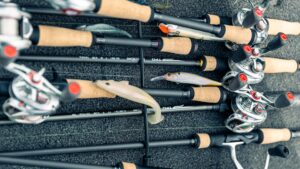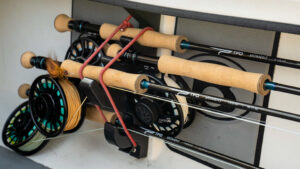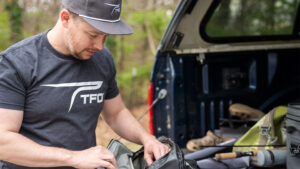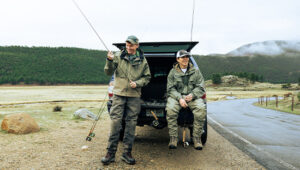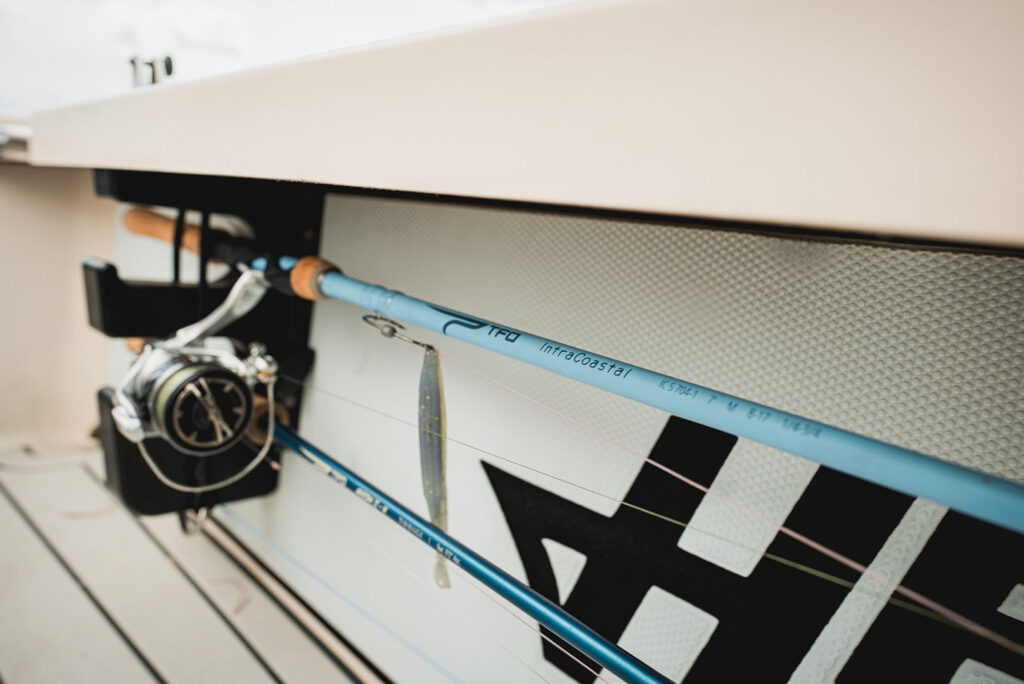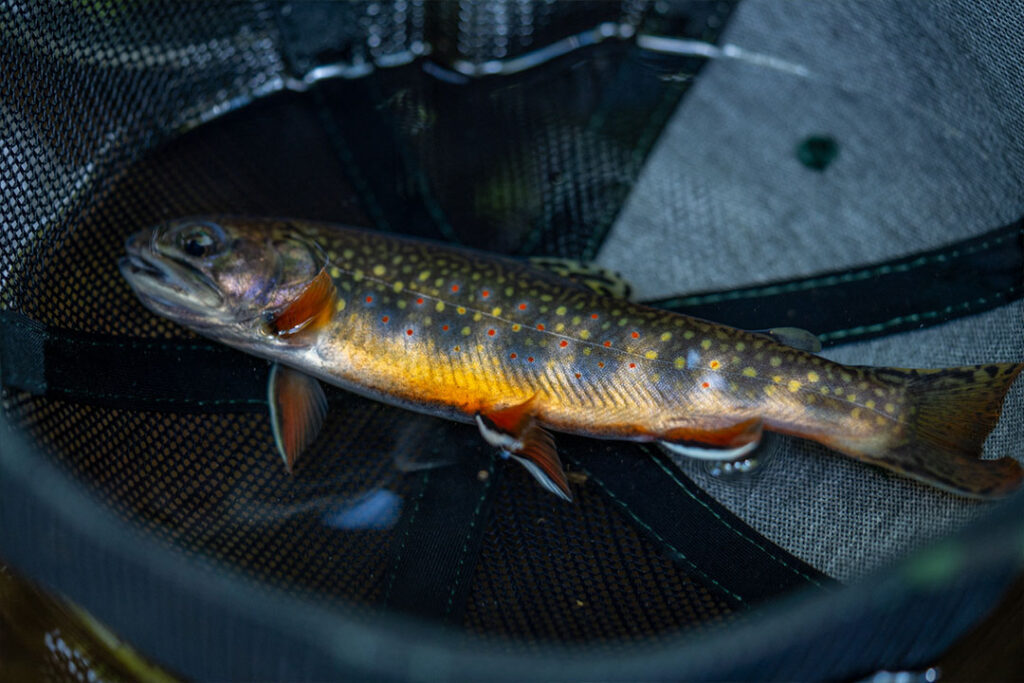Fall False Albacore: Power, Speed, and the Coastal Collision
As summer fades along the East Coast, a new kind of excitement takes over. Cooling north winds push baitfish offshore, while false albacore charge in from the Gulf Stream. The result? A fast-paced collision of predator and prey—and some of the most thrilling fishing of the year.
What Makes Albies Special
Known as false albacore, little tunny, or simply “albies,” these small tuna relatives range from Maine to the Gulf of Mexico and beyond. While their flesh isn’t table-worthy, their blistering runs and raw strength make them one of the most exhilarating inshore targets. North Carolina anglers helped pioneer their rise as a sportfish in the late 1990s, and today, fall has become the season for chasing them on both fly and conventional tackle.
The Fall Migration
As baitfish like anchovies and silversides move out of the sounds with the first cool fronts, albacore instinctively follow the north wind inshore. They crash through massive bait balls—sometimes the size of a swimming pool—sending birds diving and water boiling. When the birds start working, you know it’s time.
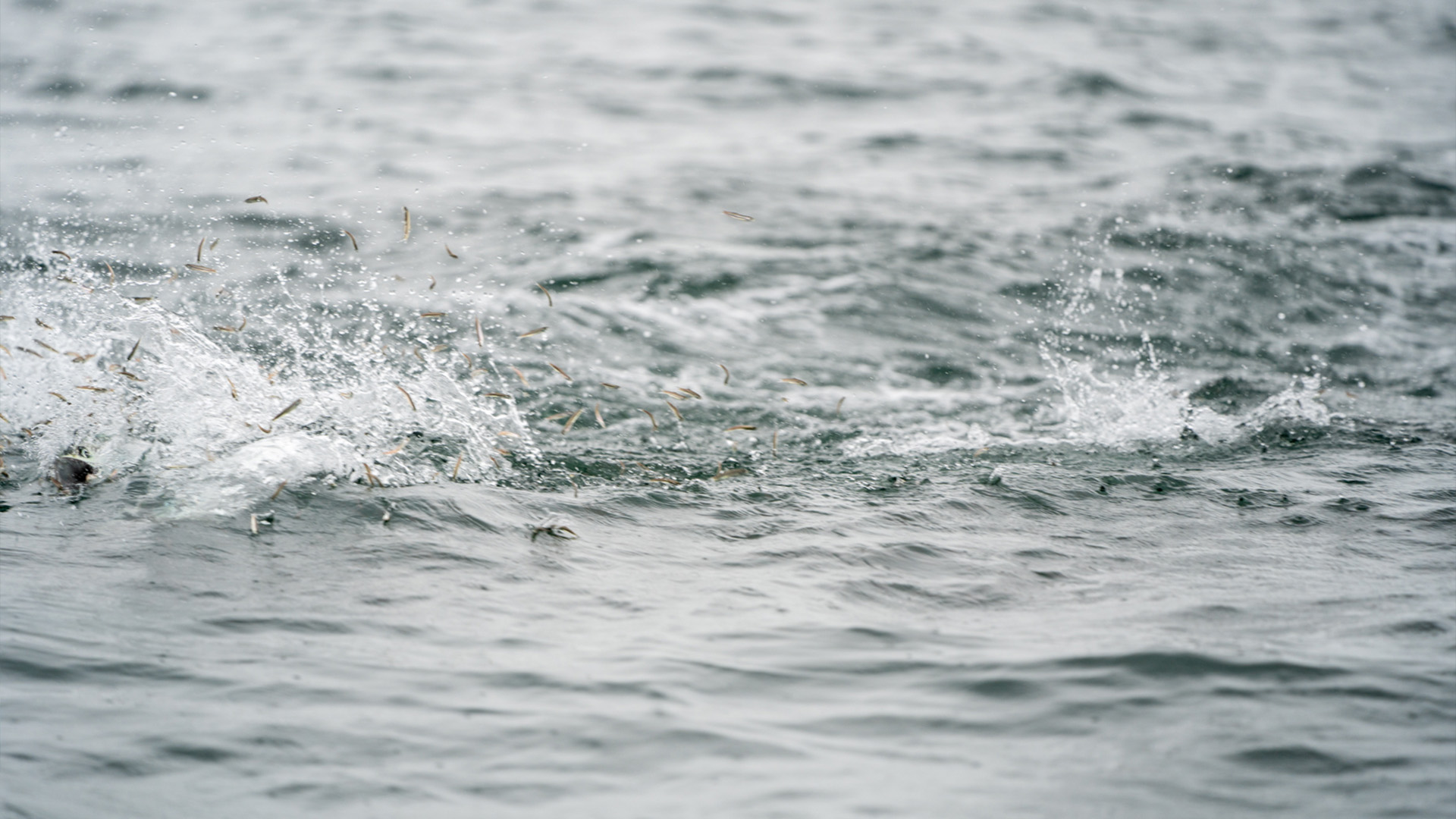
A feeding frenzy breaks out as albies push schools of baitfish to the surface. A telltale sign of fall action along the coast. // Photo: Tom Wetherington
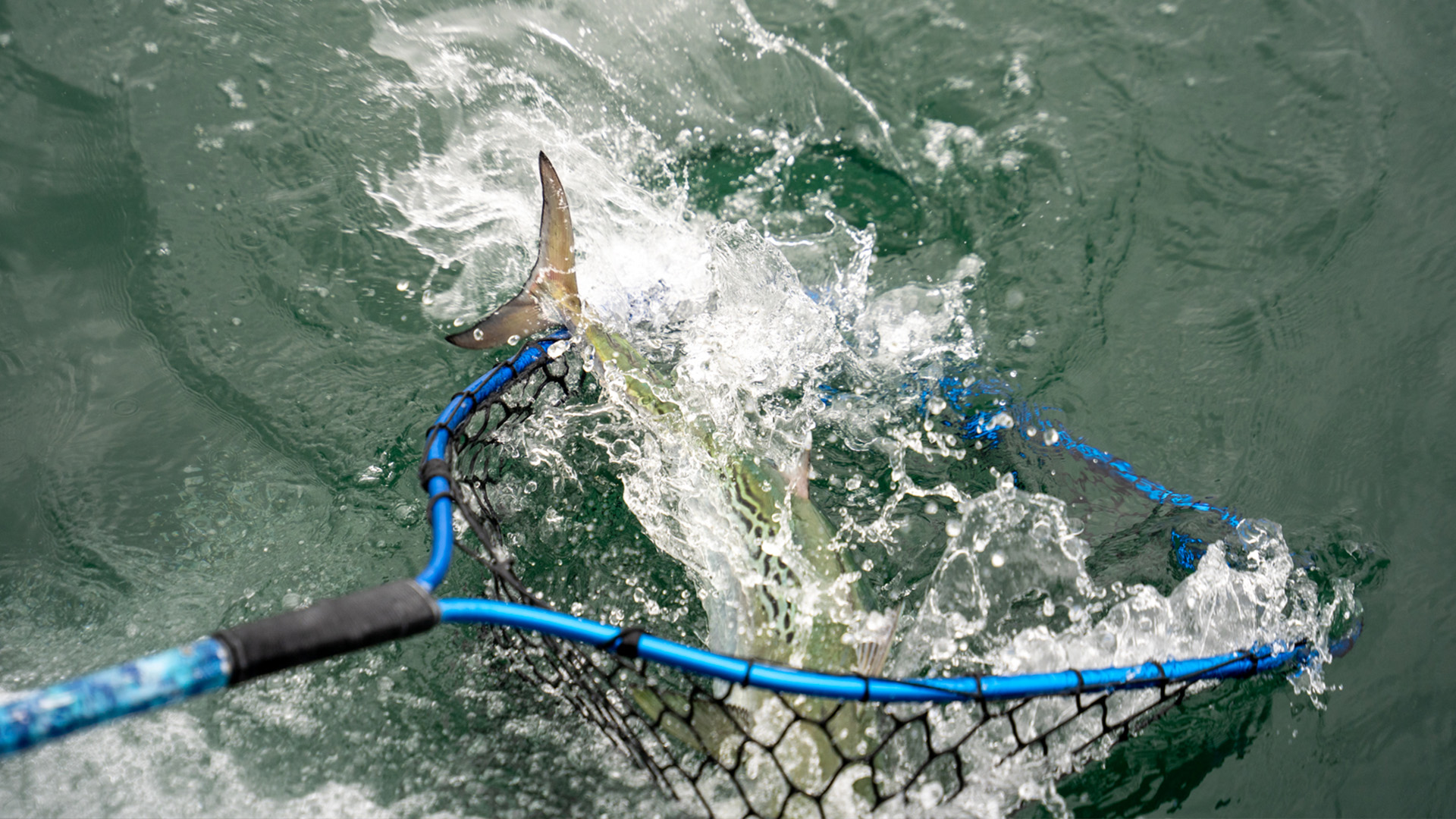
Landing an albie takes skill and timing. Their raw power and sudden bursts make every catch unforgettable. // Photo: Tom Wetherington
Fly Tactics
For early-season fish (4–6 pounds), a 7-weight Blitz or 7-weight Moment paired with a 7/8wt sized reel reel is plenty. As the season progresses and fish reach the 16–18-pound range, step up to a 9- or 10-weight Moment with a 9/10-weight reel.
Which Fly Rod Is Right For Me?
When the fall run of false albacore lights up the East Coast, having the right fly rod makes all the difference. A fast-action 9- or 10-weight rod delivers the power and distance needed to punch casts into the wind and reach fast-moving schools. These small tunas fight hard, so a strong butt section helps you control long runs and land fish quickly. For serious albie anglers, the TFO Blitz 9wt or Moment 9wt are ideal tools built to handle speed, power, and saltwater conditions.

TFO Blitz and Moment fly rods. Two purpose-built tools for chasing fast-moving saltwater species all season long.
The TFO Blitz is a fast-action rod built for power and versatility—ideal for casting heavy lines, big flies, and handling wind with ease. The TFO Moment takes performance further with an extra-fast action and graphene-reinforced construction for lightning-fast recovery, tighter loops, and precise presentations to moving fish. In short, the Blitz is powerful and forgiving, while the Moment is faster, lighter, and more exacting for advanced anglers who demand precision.
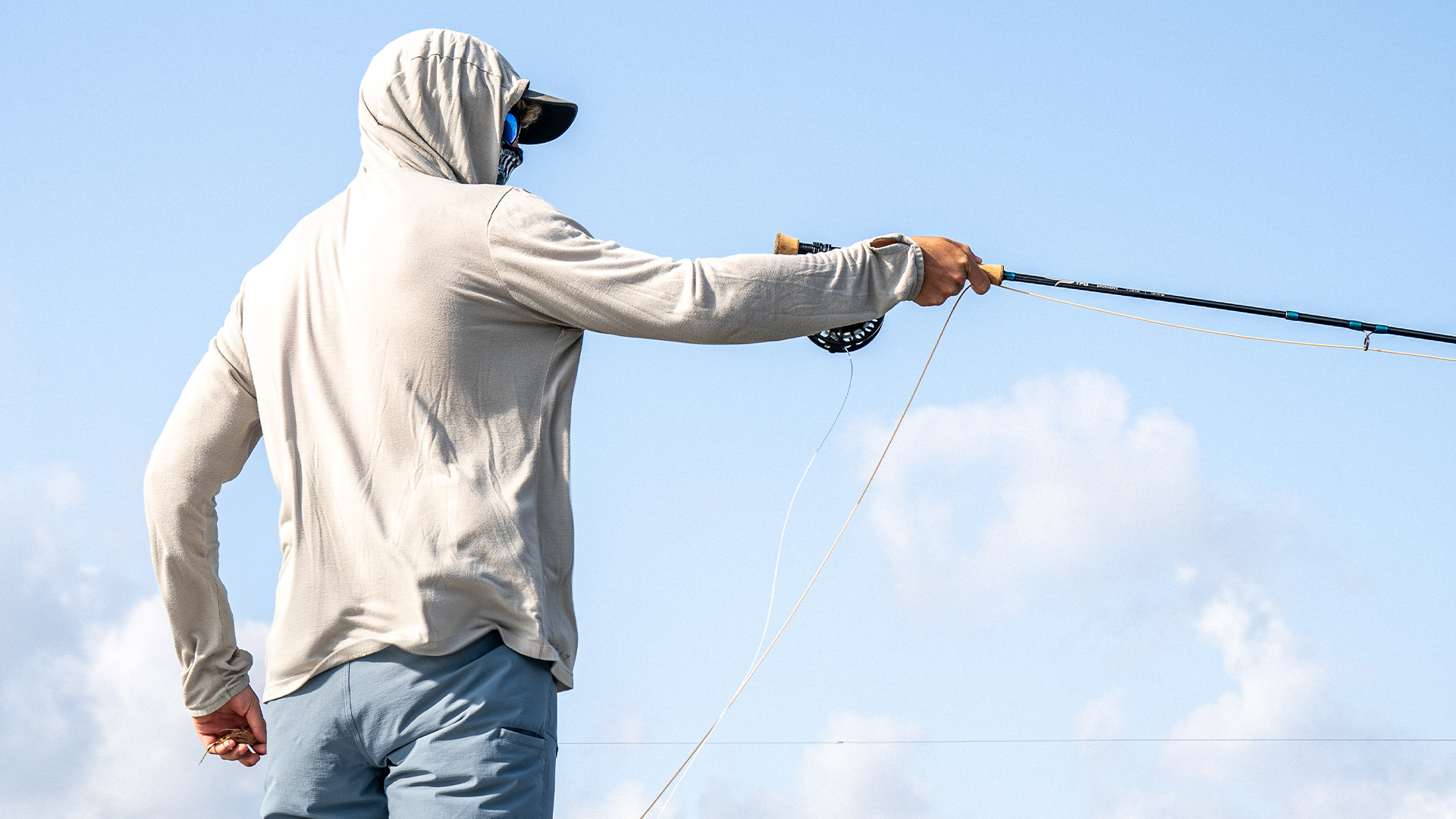
Sight casting with the TFO Moment – built for quick shots, fast recovery, and the precision needed to target fast-moving fish like false albacore.
Setup tips:
-
Line: Intermediate or clear-tip line for better depth and contact.
-
Leader: 4 ft of 20 lb fluoro straight to the fly.
-
Flies: Small (2.5–3″) translucent patterns—white or chartreuse Clousers, Surf Candies, and Gummy Minnows are staples.
-
Retrieve: Keep the line tight and strip slowly. Albies will eat even when the fly isn’t moving fast.
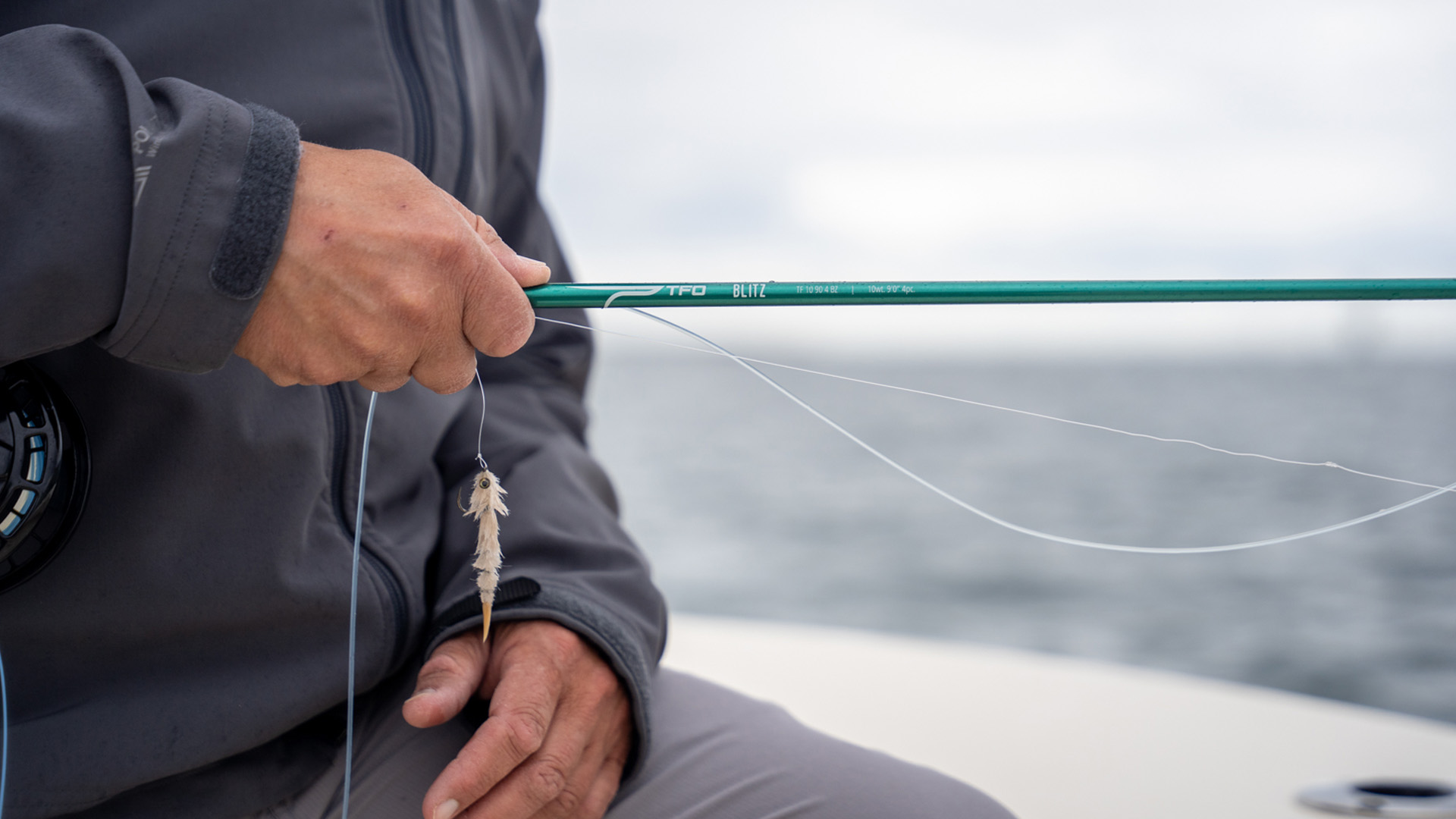
Rigged with a Scientific Anglers Full Intermediate line and a micro Game Changer, the 10wt Blitz is dialed in for chasing fall albies. // Photo: Tom Wetherington
Conventional Gear
A 7′ Medium or Medium-Heavy IntraCoastal rod is ideal, depending on lure size.
-
Long-range fish: Heavy metal spoons (around 1 oz) work great for covering distance.
-
Bait-ball situations: Switch to soft plastics—flukes on ¼–⅜ oz jig heads—worked with rod-tip twitches for erratic action.
-
Line setup: 20-lb braid with a 20–30-lb fluoro leader (heavier if Spanish mackerel are mixed in).
When fish get selective on tiny “snot bait,” try reaction strikes with a larger 5″ fluke or Albie Snack ripped fast across the surface.

TFO IntraCoastal rods are built for saltwater performance with the sensitivity, power, and durability needed for chasing false albacore and inshore species.
Shrimp-Boat Strategy
If bird and bait activity slows, look to the shrimp boats. When crews dump bycatch, everything from sharks to albies piles in. Position about a hundred feet off the stern and drop a 5″ white Clouser or jig into the chaos. For this, a Bluewater SG Medium and a 500–700 grain line are sufficient. Taking the conventional route, try the IntraCoastal Mag H.
Handling and Release
Once hooked, albies fight with pure speed and stamina. Use your drag, keep steady pressure, and watch for their “death spiral” near the boat—short, quick lifts help break it. When releasing, hold them by the tail and launch them headfirst into the water so they can get oxygen flowing immediately.
Final Thoughts
False albacore season is short but electric—a test of quick thinking, accurate casts, and strong gear. Whether you’re throwing flies into a feeding frenzy or burning spoons across breaking fish, fall albie fishing delivers an adrenaline rush few inshore species can match.
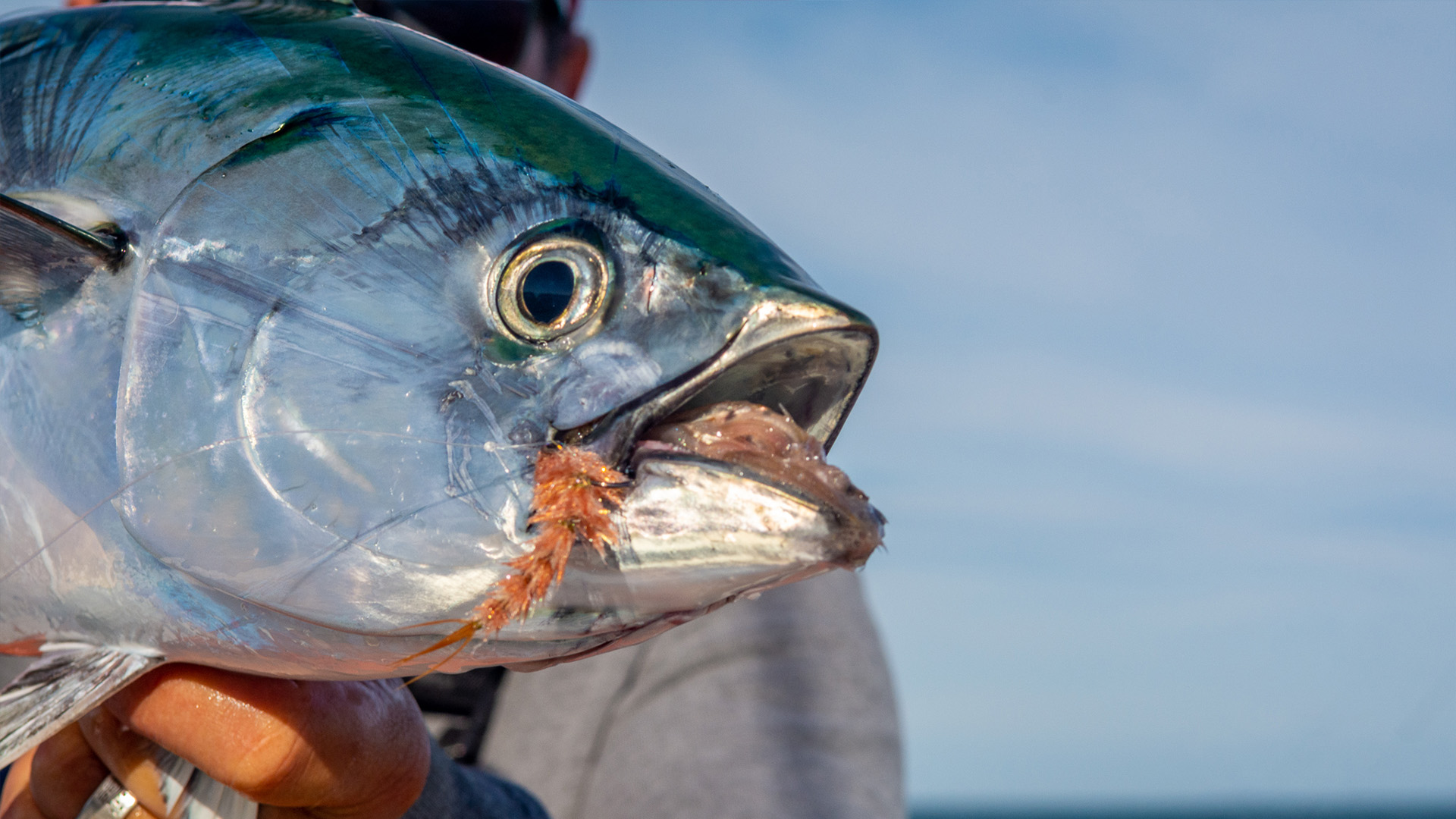
Up close with a false albacore. Metallic hues, sharp eyes, and unmatched speed make these fish a fall favorite for coastal anglers. // Photo: Jim Shulin
